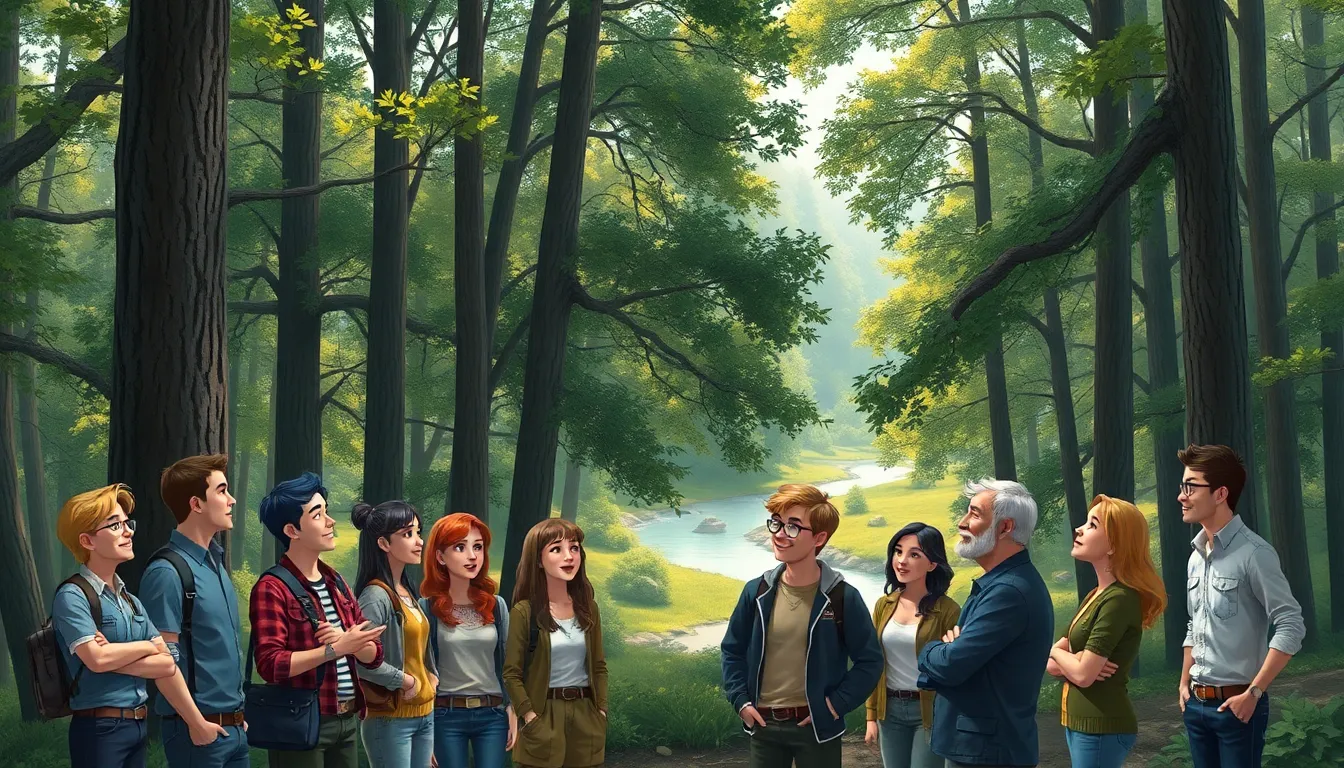In the vast universe of storytelling, world building is like the secret sauce that transforms a good tale into a legendary epic. Picture this: a universe brimming with peculiar creatures, intricate societies, and landscapes that make you want to pack your bags and move in. Who wouldn’t want to escape to a place where dragons sip tea and wizards argue about the best spell for laundry?
Table of Contents
ToggleImportance Of Story World Building
Story world building plays a critical role in storytelling. A well-crafted world enhances reader immersion, allowing them to escape reality. Unique creatures and complex societies enrich the narrative, bringing depth and authenticity to the plot. Readers connect with characters better when they understand the environments in which they thrive or struggle.
Additionally, a detailed setting can serve as a catalyst for conflict. Writers often use environmental factors to challenge characters, shaping their journeys and growth. Captivating landscapes motivate the plot’s progression, driving characters toward their goals. Thoughtful world details often ignite readers’ imaginations, leading them to explore beyond the text.
Building a story world also strengthens themes and messages. Consistency in rules and systems within the world reinforces the narrative’s core ideas. Engaging elements like politics, history, and geography elevate the stakes, compelling readers to consider broader implications. They’re not only consuming a story but also grappling with its underlying messages.
Moreover, story world building fosters creativity. Writers find inspiration through the intricate aspects of their universe, often generating unexpected plot twists and character arcs. Collaboration among various elements, such as culture and mythology, can produce a rich tapestry that captivates audiences. Such a detailed foundation creates opportunities for sequels and spin-offs, allowing the universe to expand.
Ultimately, the importance of story world building cannot be overstated. It transforms a simple tale into an immersive experience, cultivating loyalty among readers. Readers keep returning when they find themselves in intricate worlds that resonate emotionally and intellectually. Storytellers who prioritize world building achieve a lasting connection with their audience.
Key Elements Of Story World Building

Story world building incorporates essential components that create immersive narratives. These elements contribute significantly to reader engagement and storytelling depth.
Setting
Setting establishes the physical landscape where the narrative unfolds. Locations, such as cities, forests, and mountains, influence the story’s tone and themes. A meticulously crafted environment invites readers to visualize the story world vividly. Details like climate, geography, and architecture enrich the backdrop, giving context to characters’ actions. For example, a bustling metropolis might foster conflict and ambition, while a serene countryside promotes peace and introspection. The setting acts as a character in itself, shaping the narrative’s direction.
Culture
Culture encapsulates the beliefs, traditions, and social dynamics within the story world. This aspect introduces readers to unique customs and practices, enhancing depth and authenticity. Elements like language, religion, and daily life reflect a society’s values, influencing character motivations and interactions. For instance, a society that values honor might produce characters driven by duty and loyalty. Culture also allows exploration of conflicts between differing worldviews, contributing to tension and plot development. By weaving cultural threads into the narrative, writers create a rich tapestry that resonates with readers.
Characters
Characters serve as the heart of the story, driving plots with their goals and desires. Each character brings unique traits, backgrounds, and motivations to the narrative. The interplay between characters enhances drama and emotional resonance. Protagonists and antagonists create tension through their conflicting aspirations. For example, a flawed hero challenges their own values while battling against a formidable villain. Supporting characters provide additional layers, enriching the story and fostering subplots. Developing multidimensional characters ensures readers feel invested in their journeys and outcomes.
Techniques For Effective Story World Building
Effective story world building requires strategic methods and tools that enhance creativity and depth. These techniques elevate the narrative and immerse readers in the universe.
Research And Inspiration
Inspiration often springs from various sources, including history, mythology, and culture. Writers can explore different cultures to derive unique societal structures and traditions. Gathering information from real-world geography can aid in crafting believable landscapes. Analyzing existing literature or films fosters understanding of what resonates with audiences. Writers benefit from examining character relationships and plot mechanisms in popular works. Finding inspiration in nature encourages vivid landscapes that enhance realism. Development of a story world takes on a richer dimension with thorough research.
Visual Aids And Maps
Visual aids serve as valuable tools in story world building, clarifying intricate details. Creating maps establishes clear geography for the narrative. Maps provide a tangible reference for readers, fostering deeper engagement with the story. Visual aids can include illustrations of significant landmarks, creatures, or cultural symbols. These images allow writers to capture the essence of their world visually. Not only do these tools aid in tracking plot movement, they also ensure consistency in world details. Using visual aids creates a multi-dimensional experience, enhancing the immersive quality of the narrative.
Common Mistakes In Story World Building
Writers often overlook consistency in their world’s rules. Inconsistent magic systems or technology levels can confuse readers, disrupting immersion. Neglecting to establish clear boundaries between different cultures leads to misunderstandings and weakens the story’s authenticity.
Another frequent error includes failing to integrate the world into character development. When settings exist independently of character arcs, the narrative loses depth and cohesion. Characters should respond to their environments, allowing readers to see how different elements interact and influence motivations.
Some writers fail to provide enough sensory detail. Ignoring sights, sounds, and textures can result in vague and uninspired settings. Describing the rustling leaves or the aroma of local cuisine enhances the reader’s experience.
Relying too heavily on clichés also hampers originality. Familiar tropes might initially appeal but can lead to predictability. Original ideas breathe life into worlds, making them memorable and engaging.
Writers neglect the importance of backstory at times. A rich history can ground the world and clarify the present’s social and political dynamics. Omitting this information strips away context that enriches the narrative.
Overcomplication of world rules remains another pitfall. Complex systems can overwhelm readers, detracting from the main plot. Simplified rules with clear guidelines enable readers to engage without confusion.
Lastly, ignoring reader feedback limits potential growth. Engaging with beta readers or critique partners provides valuable insights. Constructive criticism often uncovers overlooked aspects and encourages improvement in world-building techniques.
Story world building is a vital component of storytelling that shapes the reader’s experience. By crafting a rich and immersive universe, writers invite audiences to lose themselves in their narratives. This process not only enhances engagement but also deepens emotional connections with characters and themes.
A well-constructed world can propel plots forward and inspire creativity. It opens doors for unexpected twists and future narratives, ensuring that stories resonate long after the last page is turned. By mastering the art of world building, writers can transform their tales into unforgettable journeys that captivate and inspire readers.





